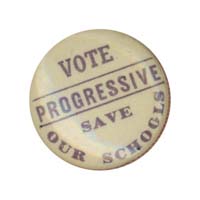
the great depression
During the years of the Great Depression, when capitalist economies throughout the world are in crisis, the Communist party and the Socialist party offer alternative political visions that gain widespread support among American workers and intellectuals. In 1932, Norman Thomas, the Socialist party presidential candidate, receives almost a million votes, while the Communist candidate, William Z. Foster receives over 100,000 votes. Communists and Socialists play key roles after 1934 in organizing a number of new unions in industries such as steel and auto.
At the same time, fascism is on the rise in Europe. Adolph Hitler comes to power in Germany in 1933, and later forges an alliance with Benito Mussolini’s fascist regime in Italy, which had taken power in 1922.
 The nation's economy virtually collapses during the Great Depression. By
1933, over 25 percent of the work force is unemployed. Hunger and homelessness
are widespread throughout the country.
The nation's economy virtually collapses during the Great Depression. By
1933, over 25 percent of the work force is unemployed. Hunger and homelessness
are widespread throughout the country.
 The Communist party is active during the years of the Great Depression in
the national student movement and in struggles for the rights of workers,
African-Americans, and the unemployed.
The Communist party is active during the years of the Great Depression in
the national student movement and in struggles for the rights of workers,
African-Americans, and the unemployed.
 Most City College students are painfully aware of the vast inequalities
within American society, and know that even a college degree provides no
guarantee of gainful employment in the midst of the depression.
Most City College students are painfully aware of the vast inequalities
within American society, and know that even a college degree provides no
guarantee of gainful employment in the midst of the depression.
 Of those workers who continue to hold jobs, millions are employed at sub-standard
wages, with little if any job security. Millions of workers participate
in massive union organizing campaigns to raise their wages and improve their
working conditions.
Of those workers who continue to hold jobs, millions are employed at sub-standard
wages, with little if any job security. Millions of workers participate
in massive union organizing campaigns to raise their wages and improve their
working conditions.





